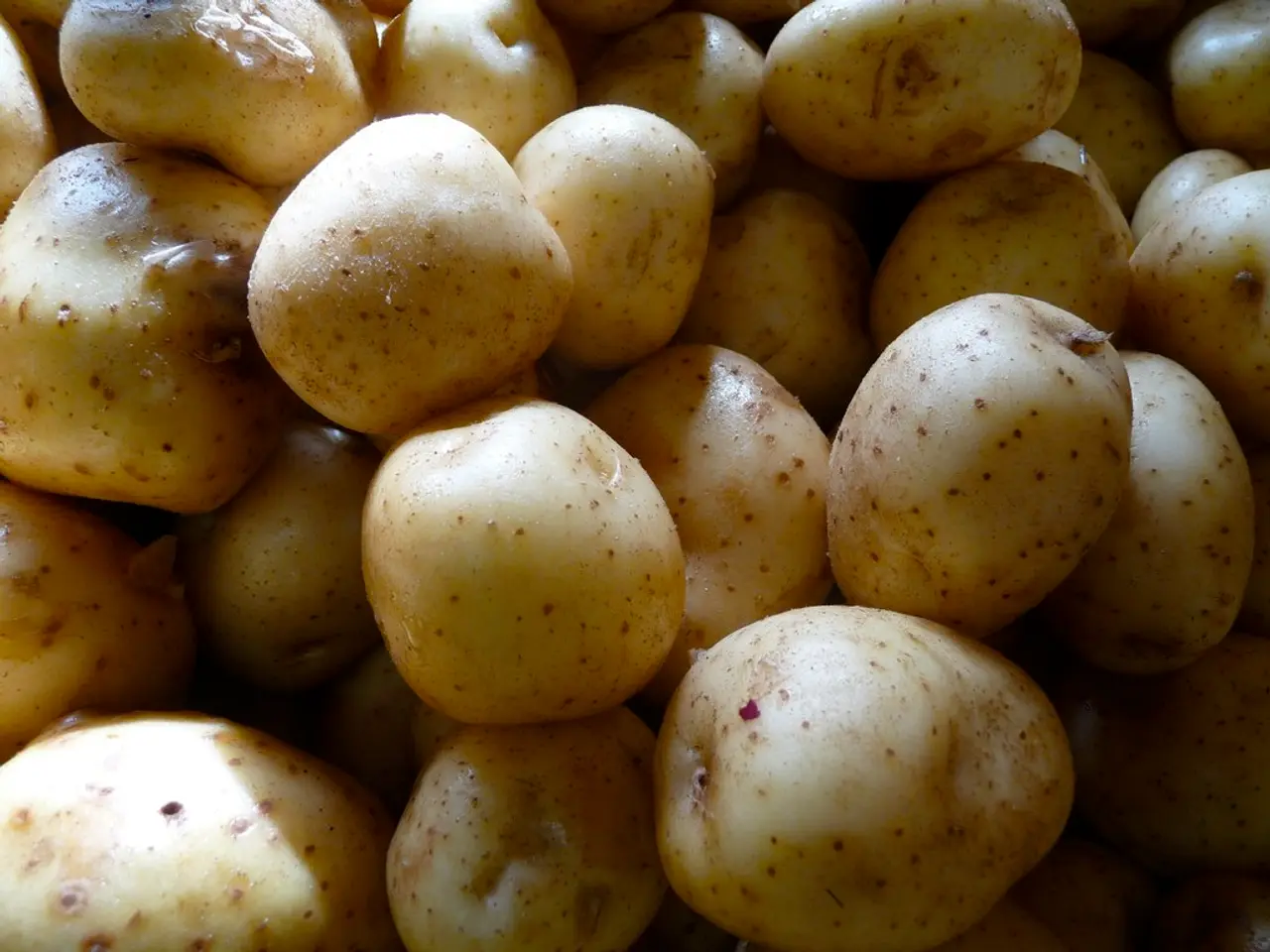Lab Experiment Involving Potatoes and Osmosis Process
In the realm of science education, a simple yet captivating experiment has been making waves among students: the Potato Osmosis Experiment. This engaging activity serves as an effective tool to help young minds grasp the complex concepts of cell functions, water movement, and semi-permeable membranes.
At its core, osmosis is a process that moves water across a semi-permeable membrane from a low concentrated solution to a high concentrated solution. This natural phenomenon can be observed in various everyday occurrences, including the behaviour of potatoes in different solutions.
The Potato Osmosis Experiment involves peeling and cutting a potato into four equal pieces. These pieces are then placed in two glasses filled halfway with distilled water. To create a hypertonic (high concentrated) solution, three tablespoons of salt are added to one of the glasses.
The outcome of the experiment depends on the solution the potato is placed in. In a hypertonic solution like salt water, water moves out of the potato cells, causing the potato to shrink and become flaccid due to the loss of turgor pressure. Conversely, in a hypotonic solution like pure water, water moves into the potato cells, causing the potato to swell and become turgid due to the gain in turgor pressure.
This change can be visually observed by measuring the change in the level of a liquid column attached to the potato, if it is shaped to fit a tube. In a hypotonic environment, the level rises, while in a hypertonic environment, it falls due to water movement into or out of the potato.
This experiment is recommended for 6th-8th grade students and integrates scientific practices like investigation and data analysis. It's a fun and educational way to understand the movement of water in plants and the concept of osmosis.
For those interested in exploring osmosis further, there are other experiment ideas available, such as the Rubber Egg Science, Egg Osmosis Experiment, Candy Fish Experiment, and Growing Gummy Bears. For a comprehensive collection of printable science projects, worksheets, and bonuses, consider The Science Project Pack, offering over 300 pages of resources for kids.
[1] Source: https://www.sciencebuddies.org/science-fair-projects/project_ideas/Biol_p012/biology/osmosis-with-potatoes-and-a-tube
- Kids can learn the principle of osmosis through the earth-friendly Potato Osmosis Experiment, a hands-on activity that demonstrates the movement of water in cell functions.
- By peeling and cutting potatoes into four equal slices and placing them in glasses filled with solutions of varying concentrations, kids can observe and understand the concept of semi-permeable membranes and cellular processes.
- Incorporating the Potato Osmosis Experiment into science education is a fun and interactive way for young minds to learn about the complexities of osmosis, cellular functions, and scientific concepts like investigation and data analysis.
- For an engaging and educational approach to learning biology, students should consider participating in the Potato Osmosis Experiment, a project that also offers opportunities for personal growth and self-development.
- The Potato Osmosis Experiment can serve as a stepping stone to further exploration of osmosis, as students can experiment with other related projects like the Rubber Egg Science, Egg Osmosis Experiment, Candy Fish Experiment, and Growing Gummy Bears.
- Educators seeking a diverse collection of science projects, worksheets, and bonuses for their students can benefit from resources like The Science Project Pack, offering over 300 pages of printable materials for students of various grade levels, including 6th-8th graders.
- For those who prioritize health-and-wellness, fitness-and-exercise, and education-and-self-development, understanding the fundamental principles of osmosis through hands-on activities like the Potato Osmosis Experiment can facilitate a lifelong appreciation for the wonders of science.
- By observing the effect of hypertonic and hypotonic solutions on potatoes, children can gain a better understanding of the practical applications of osmosis in our daily lives, such as the movement of water in plants and the development of medicines.
- Whilst creating a microscopic representation of the Potato Osmosis Experiment provides an additional layer of learning, the experiment proves effective even with simple visual observations, making it an accessible and convenient learning tool for schools and homes alike.
- For parents and educators seeking engaging and educational activities to encourage kids to learn about science, the Potato Osmosis Experiment offers fun, insightful, and practical ways to enhance children's scientific understanding and interest.




